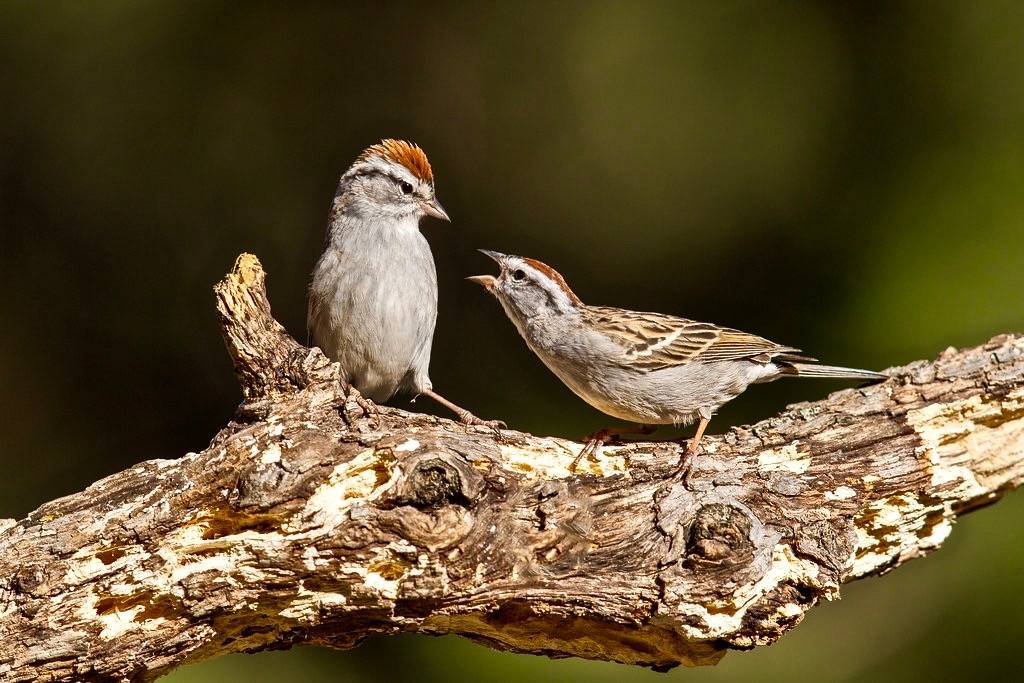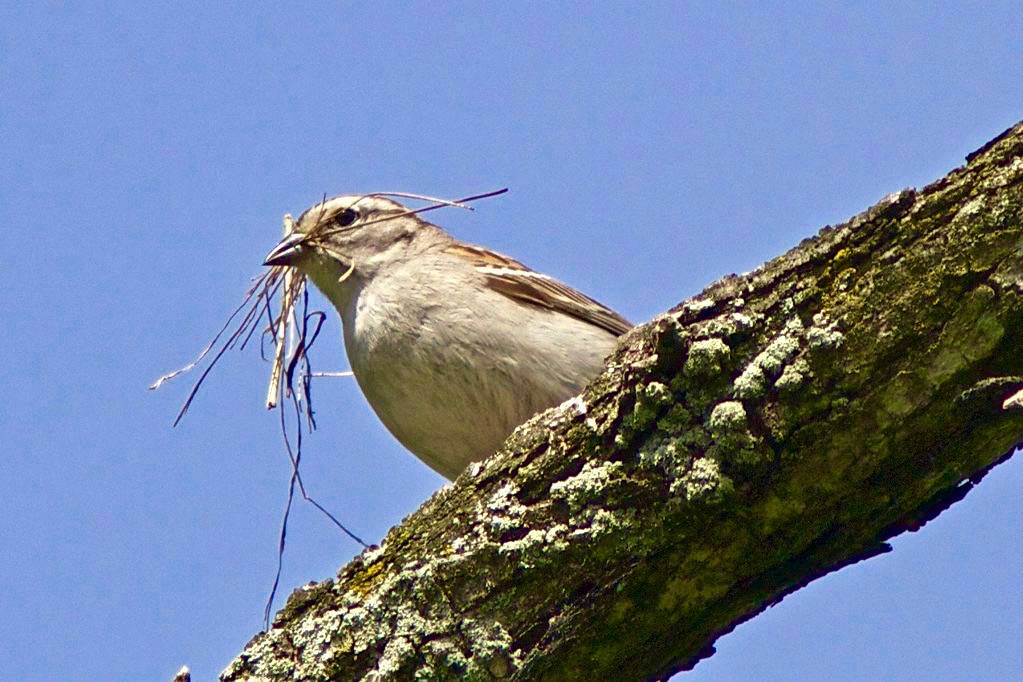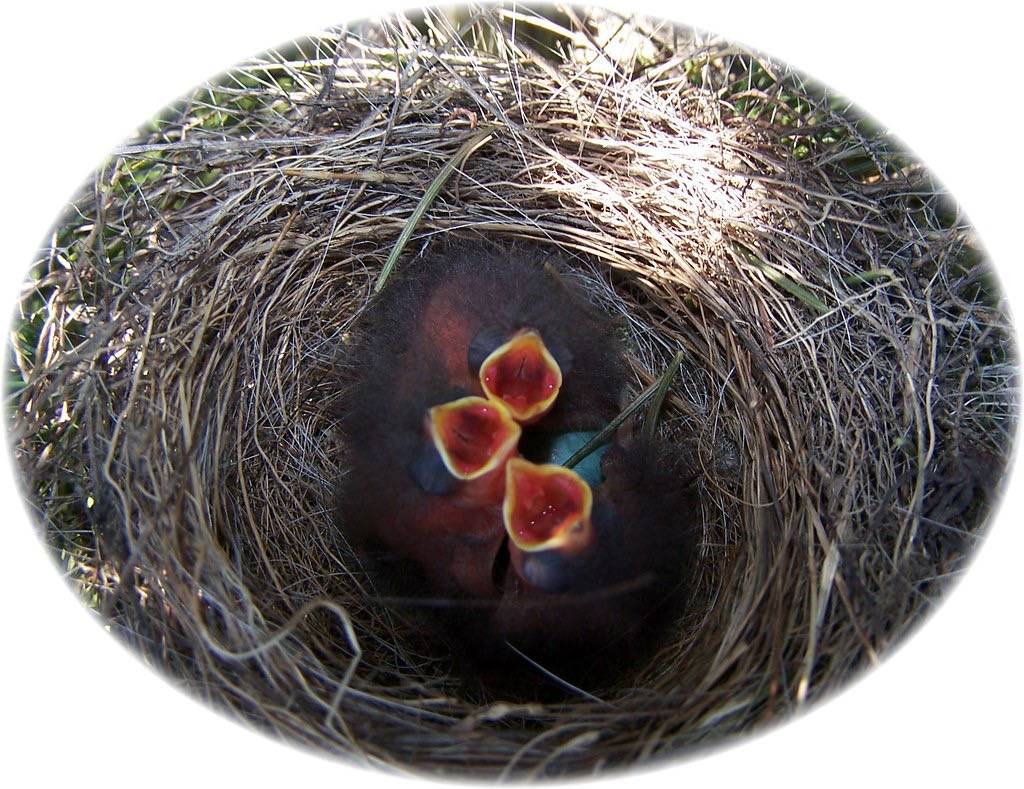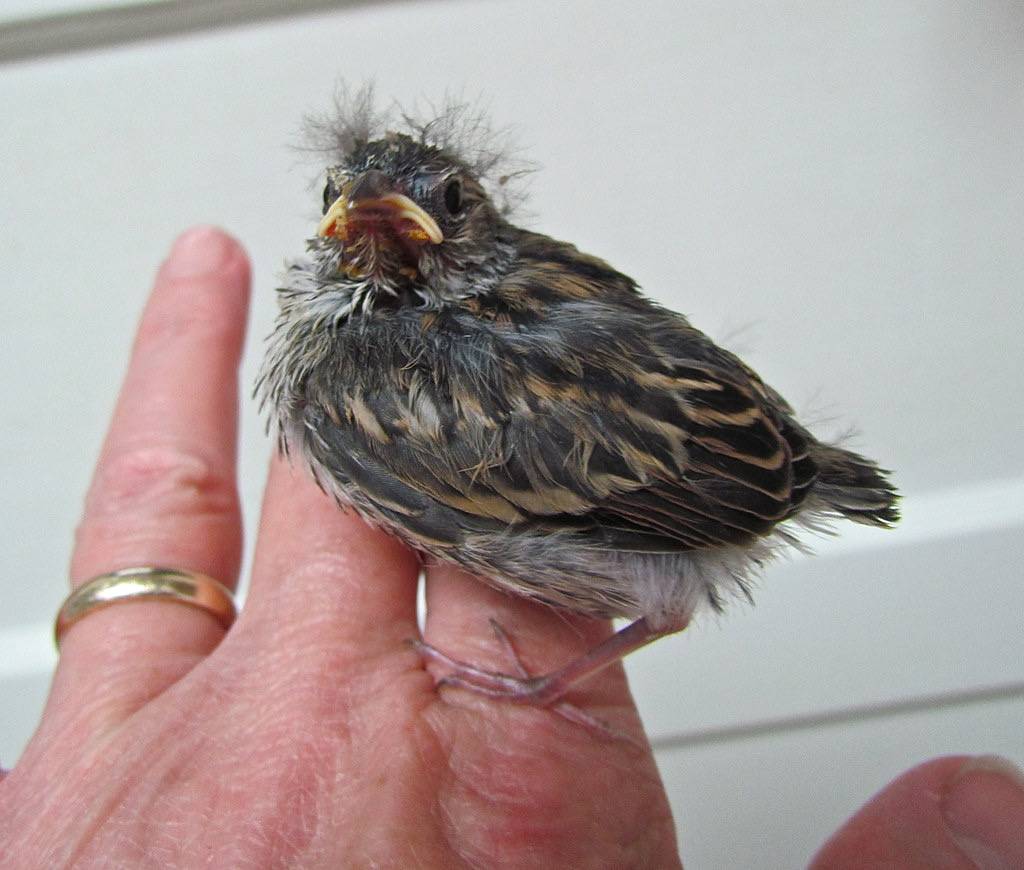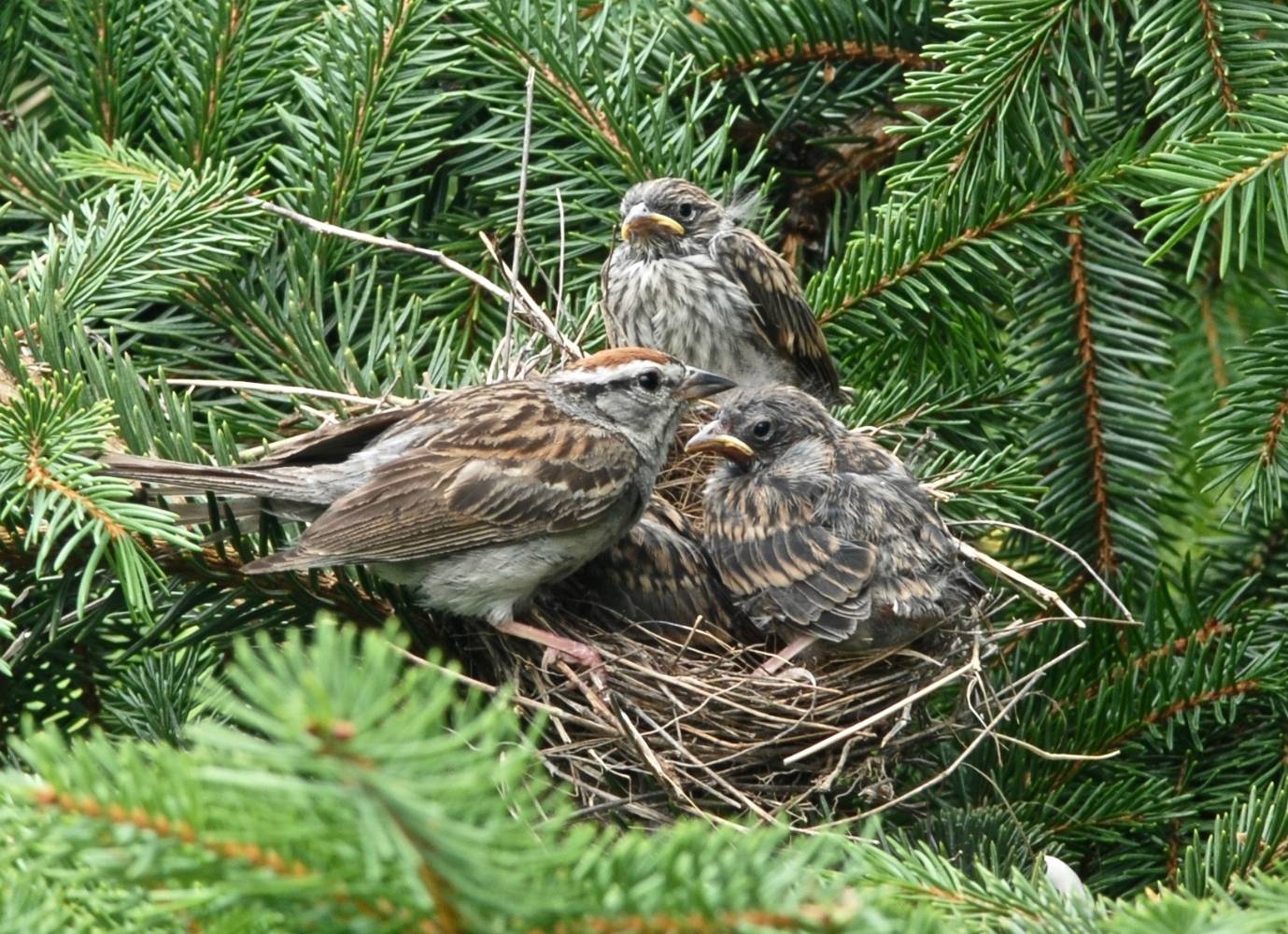Chipping Sparrow
A bright rufous cap calls attention to the Chipping Sparrow as it forages for grass seeds on the ground at the edge of woodland at Salter Grove. Data from 2002 to 2022 indicate that it passes through the park from April through October.
Its unstreaked underparts shows immediately that it is not a Song Sparrow, the common resident sparrow at Salter Grove. However, it is still not an easy task to distinguish it from the other sparrow species with unstreaked breasts.
The Chipping Sparrow can be misidentified as the American Tree Sparrow which also has a rufous cap. However, the Chipping Sparrow is smaller, has a black rather than a rufous line through its eye, and an all dark, rather than a two-toned beak. It may also be mistaken for the Field Sparrow which has a clearly defined eyering, a pink beak, and a light rufous crown and eyeline.
It breeds in grassy openings of woodland across the southern half of Canada, throughout the United States and Mexico and as far south as Central America. The above-ground nest is placed in young conifers or shrubby vegetation. It feeds on seeds year-round but consumes insects during the breeding season.
Individuals breeding in the northern half of North America migrate further south, but individuals of more southerly populations are year-round residents. The proliferation of suburban lawns interspersed with trees and shrubs has increased suitable nesting habitat for the Chipping Sparrow, especially when feeders supplement natural sources of food.




